I ended up selectively using Dullcoat to seal the decals. The aluminum already was pretty dull so I didn't have to spray the entire plane.
Whew! Today was a mixed bag of suceesses and horrors equally balanced. I will elucidate as I go on.
I started by finishing up the stripes. Microsol Liquid Decal Film worked like a charm. The inkjet color stayed put and the decals applied very nicely. This brand of inkjet decal paper has a pretty heavy decal film and takes a lot of Microsol setting solution to lay it down over raised details. As I said before, DON'T USE SOLVASET! It will dissolve these decals. Next up was all the rest of the decals and all went on without difficulty. I then sealed them all and
After things dried I used Dr Brown's grimy black weathering powder to lay down the exhaust stains. Looks sloppy, but I kind of like it.
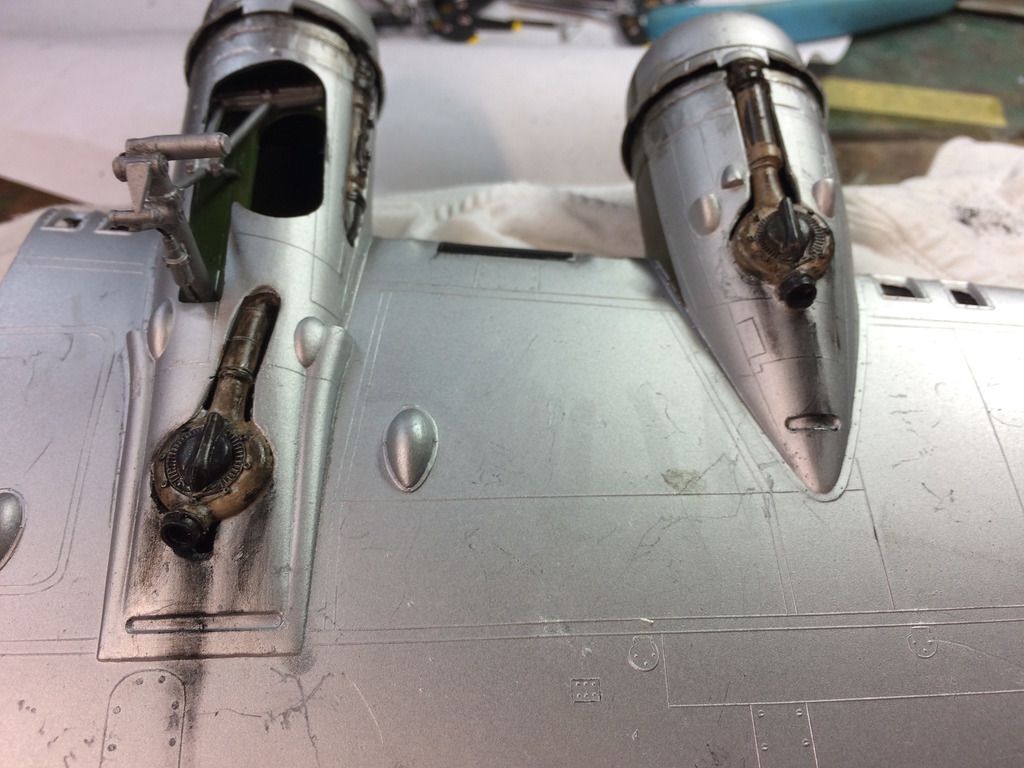
After doing this I shot the bottom with Dullcoat so the turbos are no longer shiny. With all the decoration done I started to install all the remaining glazing including the Cheyenne tail. This was a bit more challenging than I would have liked, but I did get it on without a serious screwup.
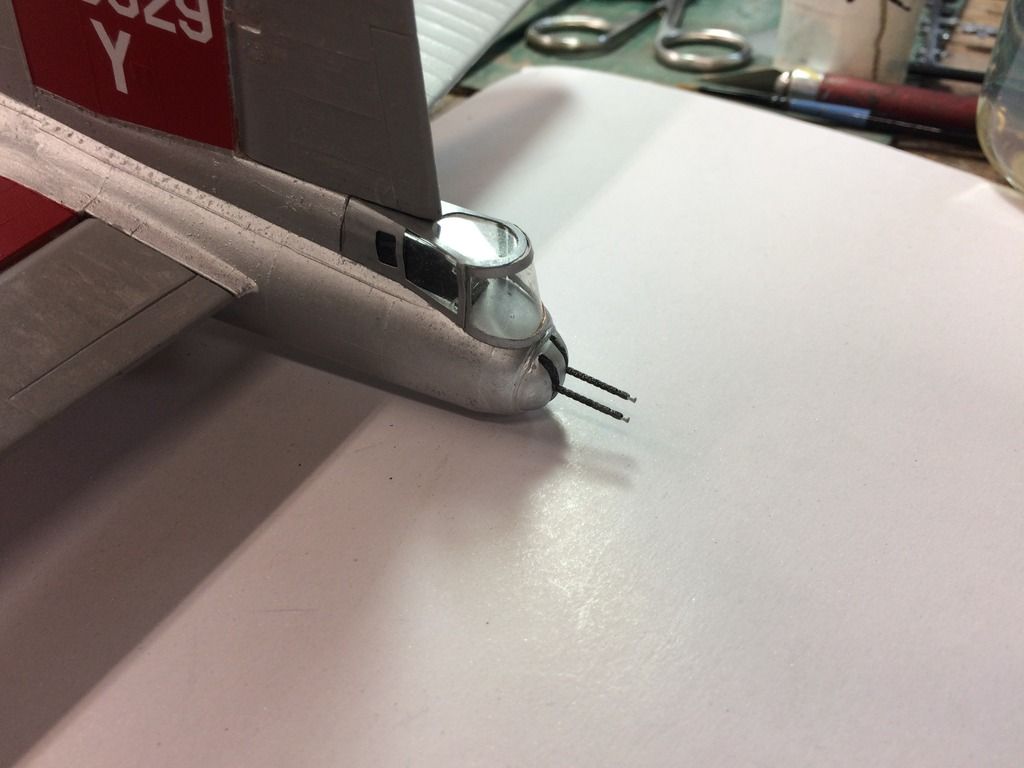
I also installed the top turret, the guns for the tail turret and fixed the broken guns in the front...AGAIN, but that wasn't the last time.
Then the first calamity happened. I wanted to use this new Real Metal buffing aluminum by AK Interactive. It's a wax-based metal paint that polishes bright. When I opened the tube for the first time, the stuff blasted out all over the place, but mostly on my hands. It was a freak'n mess to clean up, but luckily alcohol removes it. I used it on the prop spinners and it worked pretty well.

Boy those engines look cool! As far as I'm concerned, they're the best part of this whole project. Too bad the Monogram kit doesn't measure up to those Eduard R-1860s. The props are held on with medium CA.
After putting the guns back on, which entailed more micro-drilling and guitar string, I wanted to paint the muzzles with Tamiya Chrome, which then leads to the second calamity.
I thought the lid was screwed on, but when I picked it up, the bottle part flew off, flung chrome silver paint all over the floor and even a drop landed right on the red surface of the horizontal stab. Of course it landed on the red. It couldn't have landed on the entire silver-colored plane. Nope! Murphy's corroletion is still true, "Any tool (or bottle of paint) dropped will always do the maximum amount of damage."
I cleaned up that mess and touched up the stab. Then I proceeded to break off the bombardier and waist gunner gun barrels on the port side. These very fragile resin barrels are ridiculous. They have no give. If you touch them, they will break. Again, I re-drilled the barrels and breaches and, with more E Guitar string, CA'd them back again.
The Aleen's mask removal went well except for two windows. A true liquid mask might be better if you have it.

This pic shows the nose dome on. In the process of applying liquid cement, I didn't realize that some had already run out onto my fingers until upon trying to remove them found a huge glue thumb print on the bottom quadrant. Another calamity!
I wet sanded it out and then gave it some Pledge (with Future) acrylic and it's less noticeable. Still there... just less noticeable. I'm not having much luck with clear parts on this model.
Time to install the wings. You do not need to glue them. It's a lock joint. With the wings on I felt confident enough to install the bomb bay doors and the forward crew door. They actually went on easily.
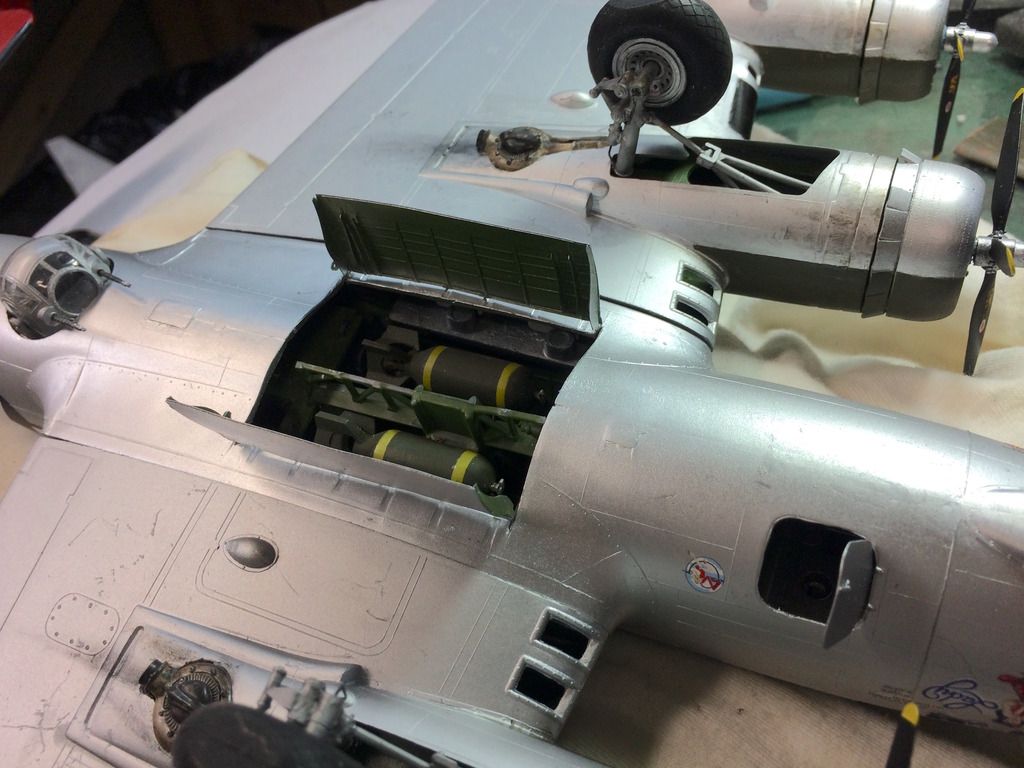
The PE here really works giving the sheet metal look to both surfaces. Lastly, I put on the wheels (although not yet glued) and got the weight spot in the right position, and put the plane on a flat surface to take some "almost complete" pictures. I say, "almost" since I still have to put on the landing light lenses. And then I just touched that port-side waist gun barrel, and BANG! It broke again. I'm running out of patience. And more imprortantly, running out of gun barrel. I have no more resin barrels other than this stub. I may, heaven forbid, have to use one of the plastic barrels. They may not be scale, but they're styrene and bend a bit before breaking. I will now have to do that repair tomorrow along with the landing lights.
So here are some "almost finished" pics shot with the iPhone. When finished tomorrow, I will take it with Canon EOS and do depth-of-field work on it.

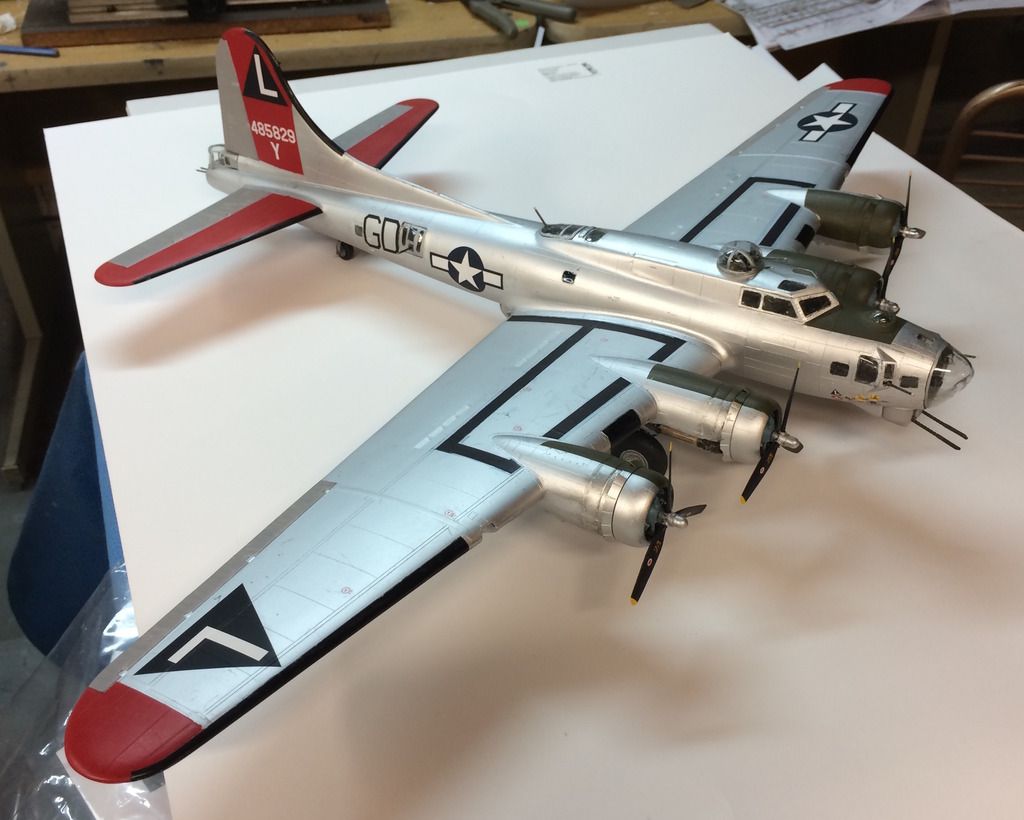
There still some work to do around that ill-fitting nose dome that this picture really shows up.
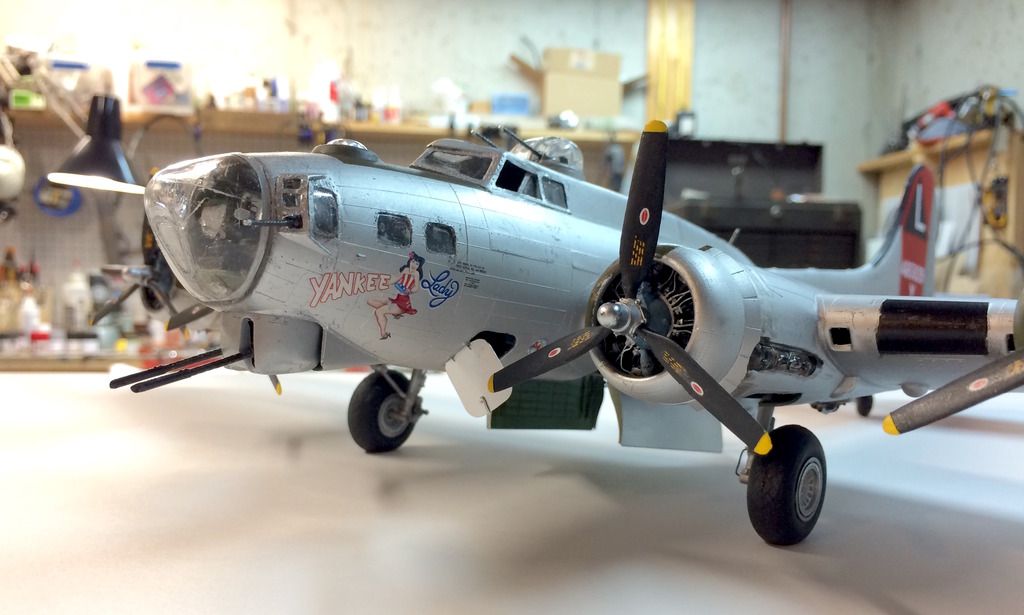
SO... now that we're heading back East on Friday instead of tomorrow, I will definitely be able to finish it. That is if I don't break anything else.